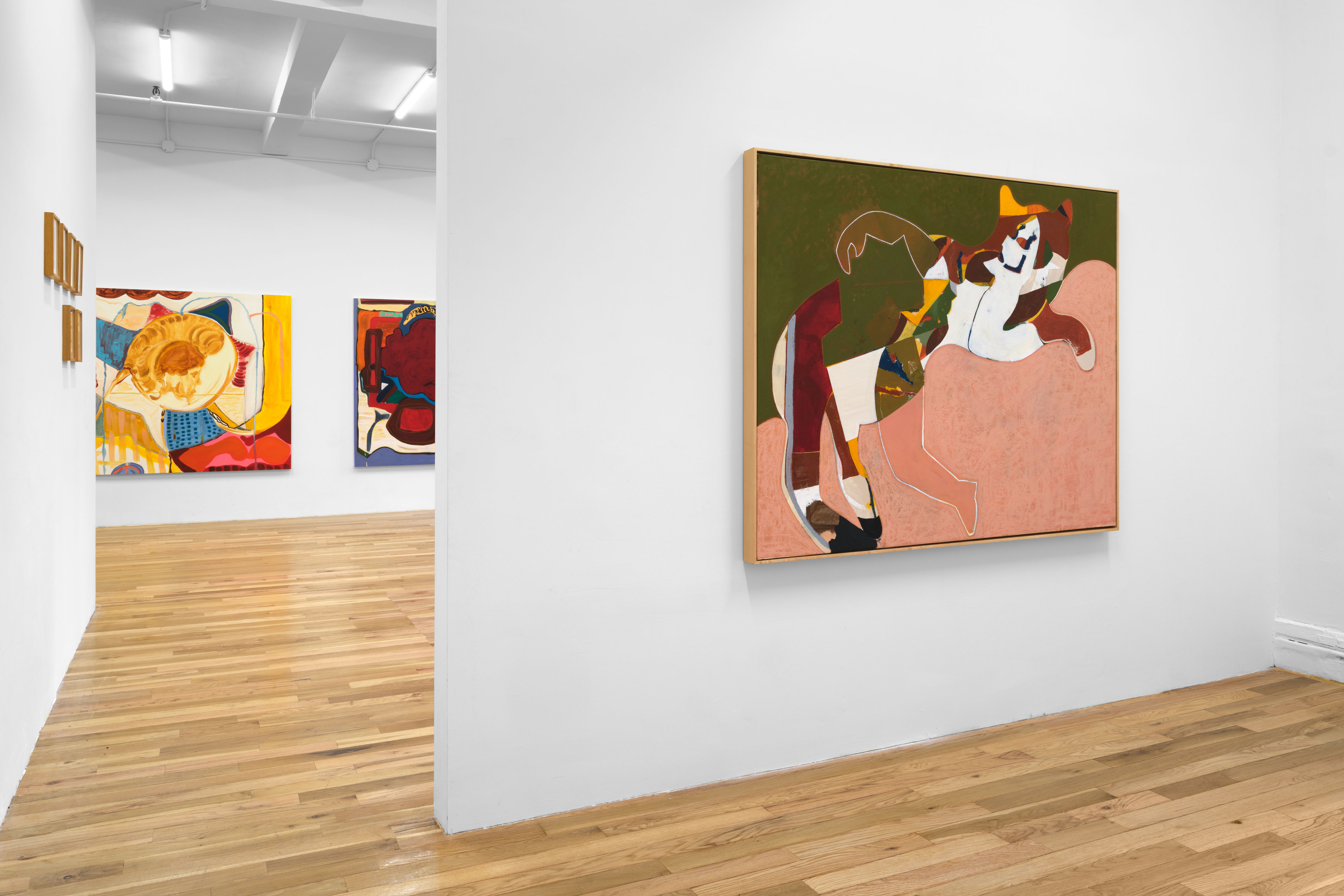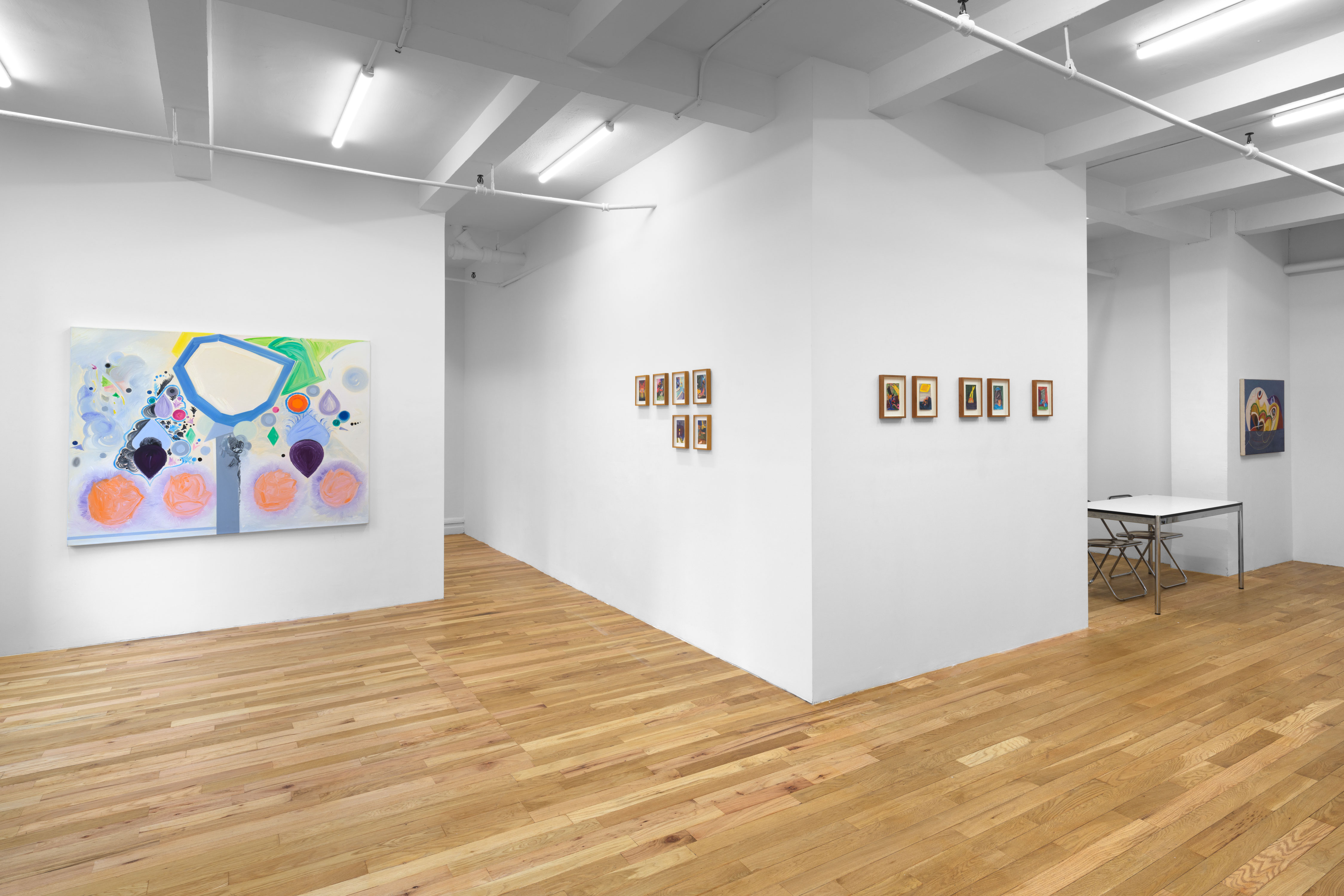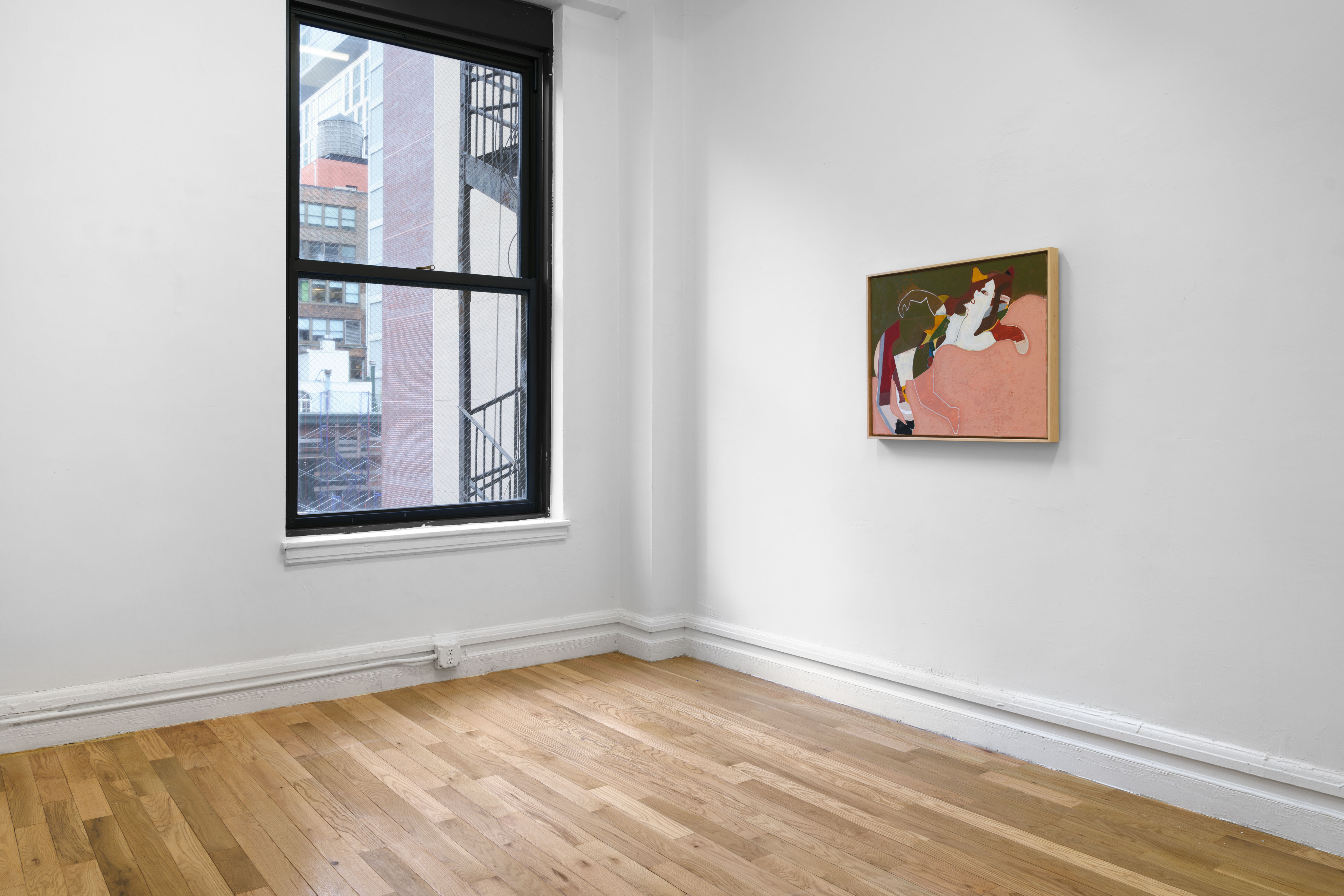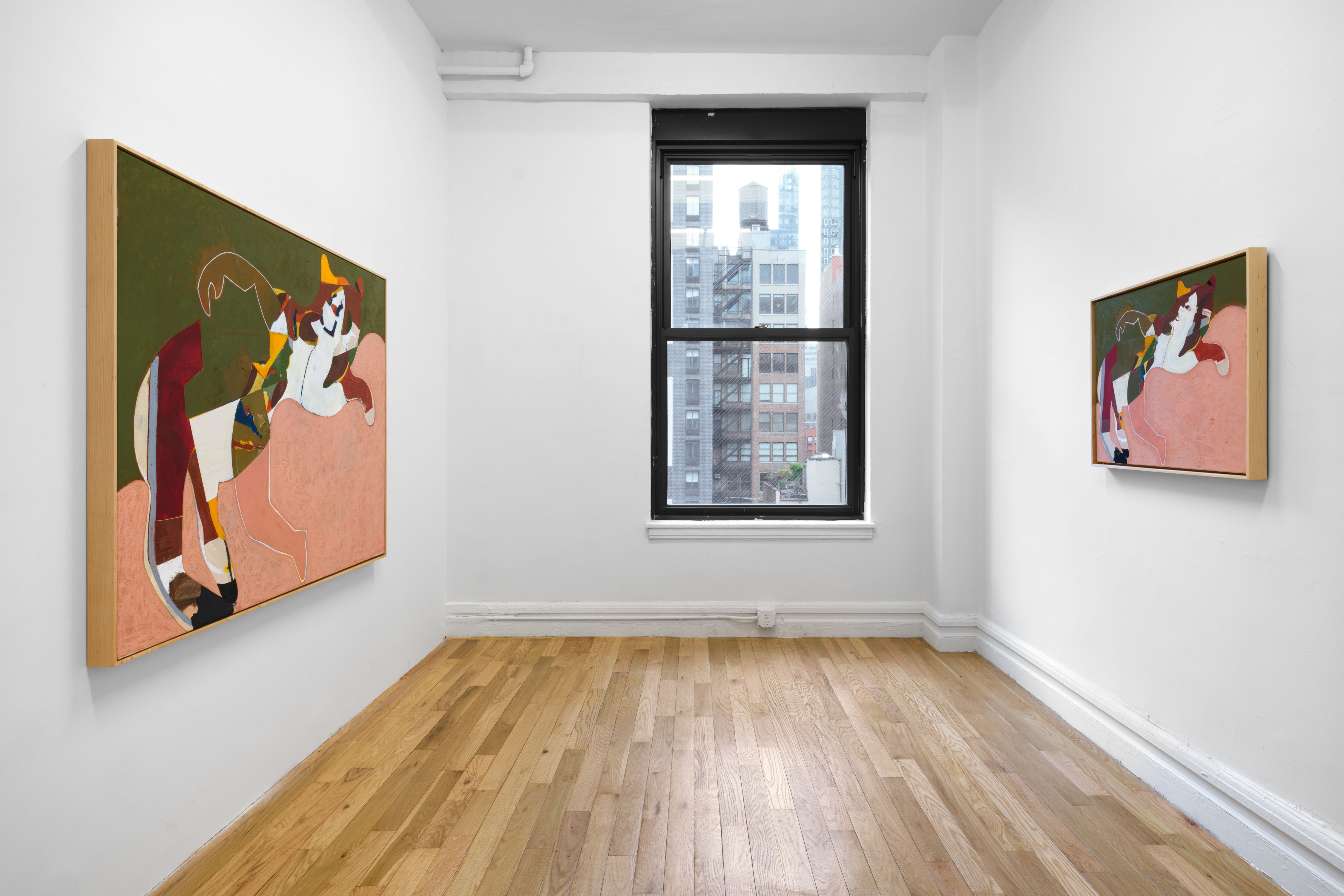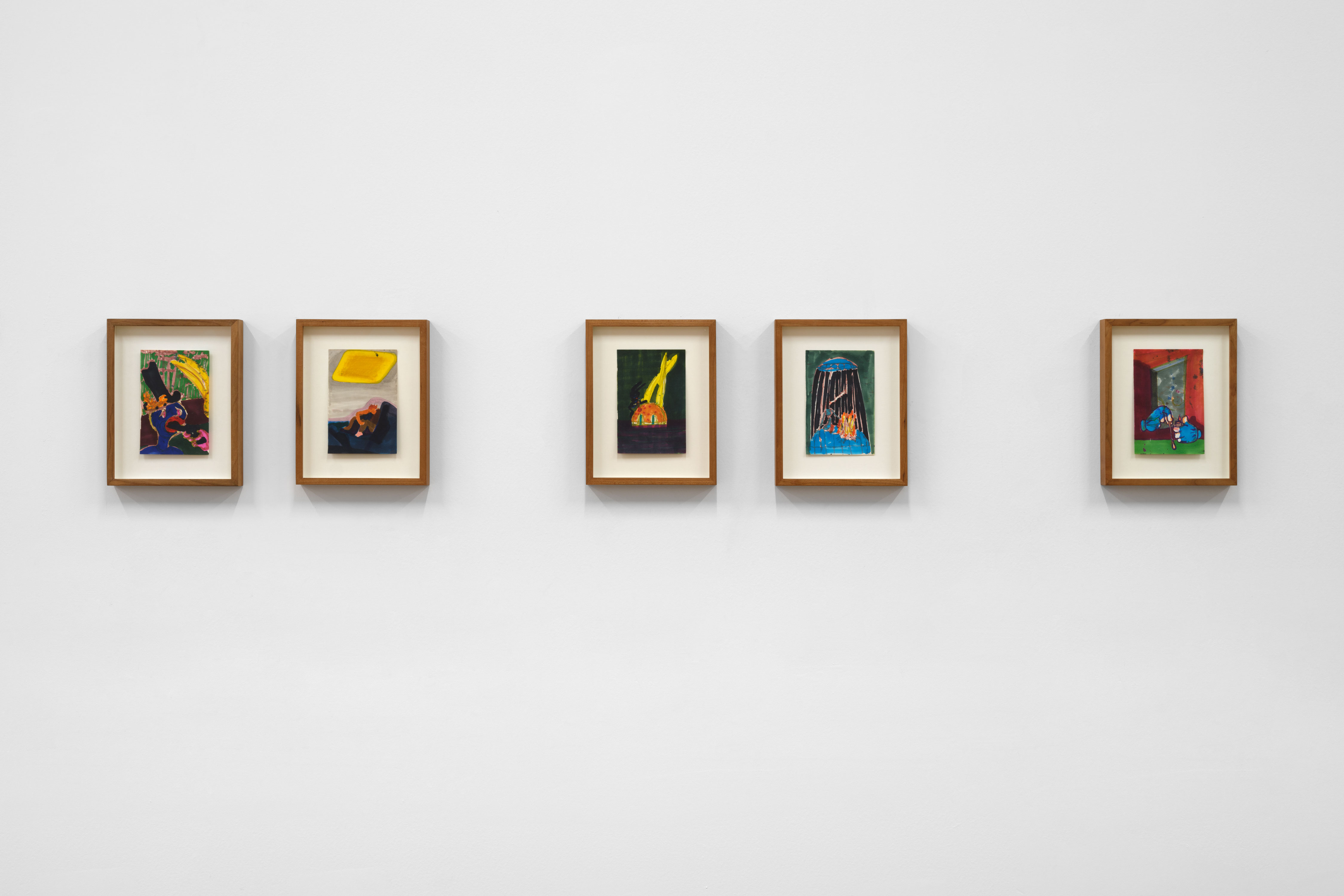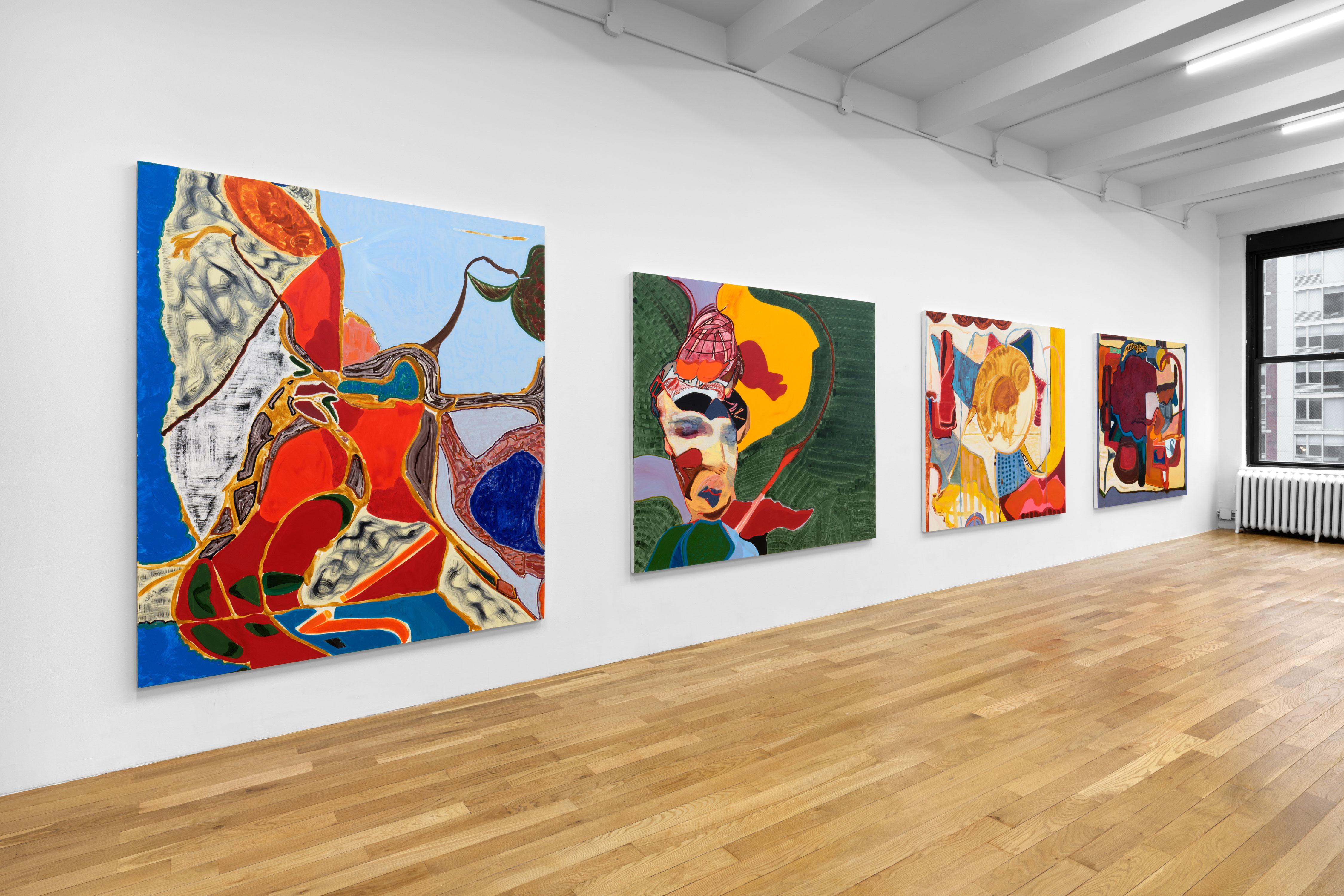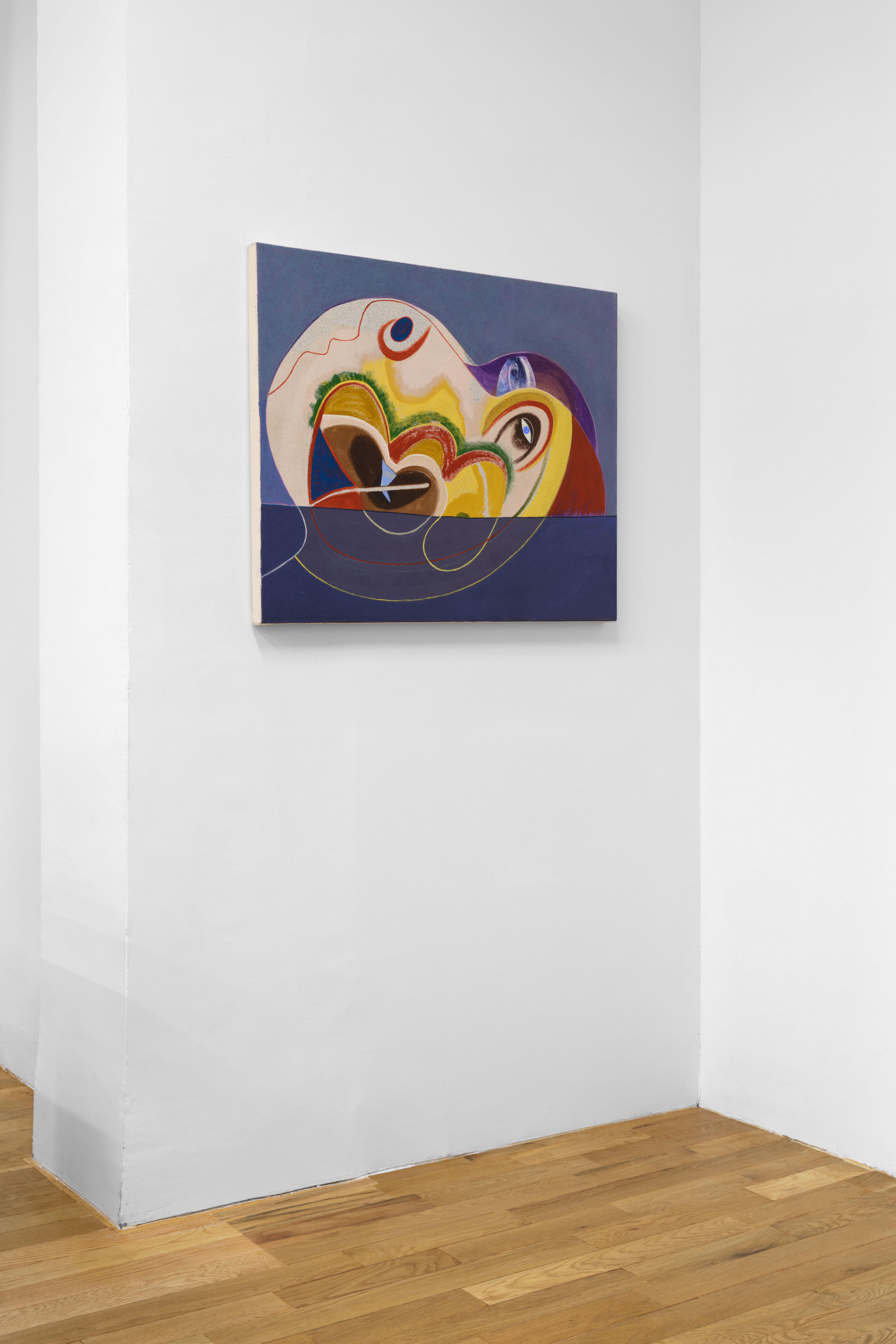The rose is the rose and is the cat
Brian DeGraw, Tamo Jugeli, & Tamara K.E.
4 June – 2 August, 2024

Tamara K.E., We Are Not Afraid of Thieves II, 2012, oil on canvas
56 x 64 inches, 142.2 x 162.6 cm
Polina Berlin Gallery is pleased to announce The rose is the rose and is the cat, a group show of three artists, Brian DeGraw, Tamo Jugeli, and Tamara K.E., on view from June 4 through July 12, 2024.
The show’s title is a riff on Gertrude Stein’s famous line, “a rose is a rose is a rose is a rose,” itself a riposte to Shakespeare’s Romeo: “What's in a name? That which we call a rose/ By any other name would smell as sweet.” Stein boldly chose the spot underneath Juliet’s balcony as the place to pick a fight about semiotics. A rose is just a rose: a word, plain and simple. Beyond the word, however, the meaning is fluid and obscure, subject to the corrosion of time and cultural connotation. Stein, however, was a writer. Brian DeGraw, Tamo Jugeli, and Tamara K.E. are visual artists for whom language itself presents another hurdle of translation.
The works in this exhibition exist in liminal spaces between abstraction and figuration, visual and written language, and waking and sleeping, haunting the eye like a dream half remembered—or half forgotten. Tamara K.E’s large-format paintings are from a body of work she undertook in New York from 2011-13, entitled We are not afraid of thieves. These paintings are juxtaposed with smaller mixed-media works on paper from a series entitled Revisiting Fear. For K.E., in this particular series she “addresses the dynamics of our cultural memories, establishing seemingly random, free-flowing systems of codes, signifiers, and energy fields, and also subsequently creating a stage for a final outcry of farewell to history.” Yet, she presents work that “doesn’t want one understanding,” subscribing to the axiom that no one steps in the same river twice.
Tamo Jugeli’s paintings have an arresting, almost revelatory nature that resists easy categorization. Her raw and unmediated communion with paint keeps language at an arm’s length—sometimes sternly, sometimes playfully. Forms seem to emerge from the composition as quickly as they vanish; riots of color emerge and disperse, fluctuating between resolving and simply carrying on into the next undefinable narrative moment.
Brian DeGraw’s paintings are perhaps the most spiritual, taking cues from Butoh, a form of Japanese dance theater. In the two versions of The Dance of Grief (after Steinlen) that ground the exhibition, the pictorial image began as an improvisation but revealed its meaning and relevance as it developed. For DeGraw, the painting “organically became some sort of portrayal of, at once, the anguish felt by those grieving a loss and the serenity of those whose ascension has caused this anguish.” This relates to Butoh in the way it mirrors grief. The work revolves around a loss of control: the body inhabited by a turbulent spirit.
Together the three mine a particular visual language, a gestural rhythm. One might attempt to ascribe this to the home country Tamo Jugeli, and Tamara K.E. share (Georgia) or to the home Tamo Jugeli and Brain DeGraw have made together in New York, but, ultimately, the banter among the three remains an idiom as mysterious to the artists as to the viewer. The show is a loop of individuation and deindividuation. “This dynamic of influences with these two artists makes this show interesting to me,” Jugeli said, “because it’s kind of a map of how my brain works and communicates unconsciously…it reflects how drastically different we are, which is beautiful and also sad and—in a funny way—reminds me of the impossibility of total connection.”
The rose is the rose and is the cat presents lines and shapes that seem stubbornly inchoate. Although the paint is static on the canvas, it taunts and teases with the nearness of discernible—nameable—forms and objects. The refusal to depict on the very precipice of depiction has a philosophical bent. Heidegger wrote of "the thingness of the thing" to discourage us from conflating the word and the object and reminding us that context is inseparable from how we experience the world. All three artists viscerally know that each viewer will bring their own context and individual take on each work. Jugeli does not find this discouraging. She cites Simone Weil: “Two prisoners whose cells adjoin communicate with each other by knocking on the wall. The wall is the thing which separates them but it is also their means of communication…every separation is a link.”
- Cara Marsh Sheffler
Brian DeGraw is an multimedia artist and musician working across painting, drawing, installation, video, and sculpture. Born in Connecticut in 1974, DeGraw lives and works in Brooklyn, New York. He has presented solo exhibitions at James Fuentes (New York), Allen & Eldridge (New York), and Real Estate Fine Art (New York); Le Confort Moderne (Poiters, France); and Wish-Less (Tokyo, Japan). His work has been included in group exhibitions at The Whitney Museum of Art (New York), Museum of Modern Art (New York), The Jewish Museum (New York), White Columns (New York), Swiss Institute (New York), Pace Gallery (New York), Tramps (New York), DeKunsthalle Wien (Vienna, Austria), Deste Foundation (Athens, Greece), among others.
Born in Tbilisi, Georgia, in 1994, Tamo Jugeli’s work has been the subject of two solo exhibitions at Polina Berlin Gallery and two at Gallery Artbeat (Tbilisi, Georgia). A forthcoming solo exhibition at Tanya Leighton (Berlin, Germany) will open in October 2023. She has been included in group exhibitions at Galerie Balice Hertling (Paris, France), The Hill Art Foundation (New York), Gallery Artbeat (Tbilisi, Georgia) and the Svaneti Museum of History and Ethnography (Mestia, Mestia), among others.
Tamara K.E. is a Georgian-born German artist who emerged from the Düsseldorf art scene in the early 2000s. K.E. studied at the Academy of Fine Arts in Munich and Kunstakademie Düsseldorf (Meisterschüler Alfonso Huppi) and graduated in 2004. Since 2010, K.E. has lived and worked in New York and Dusseldorf. K.E. represented Georgia at the 50th Venice Biennale and was invited to the 1st Prague Biennial. She has participated in shows in the U.S. and Europe and has exhibited at venues such as Haus Huth, Daimler Contemporary (Berlin, Germany), Sprengel Museum (Hanover, Germany); Whitechapel Gallery (London, UK); Central House of Artists (Moscow, Russia); CoBrA Museum (Amsterdam, Netherlands); Van der Heydt Museum (Wuppertal, Germany); Kunsthalle Hamburg (Hamburg, Germany), and Kunsthalle Göppingen (Göppingen, Germany), among others. Her work-group "Next Comes Democracy," created in collaboration with Hans Mayer Gallery (Düsseldorf, Germany), is on permanent display at Daimler Contemporary Headquarters at Haus Huth, Berlin.
![]()
Tamo Jugeli, Untitled, 2024, oil, oil stick on canvasThe show’s title is a riff on Gertrude Stein’s famous line, “a rose is a rose is a rose is a rose,” itself a riposte to Shakespeare’s Romeo: “What's in a name? That which we call a rose/ By any other name would smell as sweet.” Stein boldly chose the spot underneath Juliet’s balcony as the place to pick a fight about semiotics. A rose is just a rose: a word, plain and simple. Beyond the word, however, the meaning is fluid and obscure, subject to the corrosion of time and cultural connotation. Stein, however, was a writer. Brian DeGraw, Tamo Jugeli, and Tamara K.E. are visual artists for whom language itself presents another hurdle of translation.
The works in this exhibition exist in liminal spaces between abstraction and figuration, visual and written language, and waking and sleeping, haunting the eye like a dream half remembered—or half forgotten. Tamara K.E’s large-format paintings are from a body of work she undertook in New York from 2011-13, entitled We are not afraid of thieves. These paintings are juxtaposed with smaller mixed-media works on paper from a series entitled Revisiting Fear. For K.E., in this particular series she “addresses the dynamics of our cultural memories, establishing seemingly random, free-flowing systems of codes, signifiers, and energy fields, and also subsequently creating a stage for a final outcry of farewell to history.” Yet, she presents work that “doesn’t want one understanding,” subscribing to the axiom that no one steps in the same river twice.
Tamo Jugeli’s paintings have an arresting, almost revelatory nature that resists easy categorization. Her raw and unmediated communion with paint keeps language at an arm’s length—sometimes sternly, sometimes playfully. Forms seem to emerge from the composition as quickly as they vanish; riots of color emerge and disperse, fluctuating between resolving and simply carrying on into the next undefinable narrative moment.
Brian DeGraw’s paintings are perhaps the most spiritual, taking cues from Butoh, a form of Japanese dance theater. In the two versions of The Dance of Grief (after Steinlen) that ground the exhibition, the pictorial image began as an improvisation but revealed its meaning and relevance as it developed. For DeGraw, the painting “organically became some sort of portrayal of, at once, the anguish felt by those grieving a loss and the serenity of those whose ascension has caused this anguish.” This relates to Butoh in the way it mirrors grief. The work revolves around a loss of control: the body inhabited by a turbulent spirit.
Together the three mine a particular visual language, a gestural rhythm. One might attempt to ascribe this to the home country Tamo Jugeli, and Tamara K.E. share (Georgia) or to the home Tamo Jugeli and Brain DeGraw have made together in New York, but, ultimately, the banter among the three remains an idiom as mysterious to the artists as to the viewer. The show is a loop of individuation and deindividuation. “This dynamic of influences with these two artists makes this show interesting to me,” Jugeli said, “because it’s kind of a map of how my brain works and communicates unconsciously…it reflects how drastically different we are, which is beautiful and also sad and—in a funny way—reminds me of the impossibility of total connection.”
The rose is the rose and is the cat presents lines and shapes that seem stubbornly inchoate. Although the paint is static on the canvas, it taunts and teases with the nearness of discernible—nameable—forms and objects. The refusal to depict on the very precipice of depiction has a philosophical bent. Heidegger wrote of "the thingness of the thing" to discourage us from conflating the word and the object and reminding us that context is inseparable from how we experience the world. All three artists viscerally know that each viewer will bring their own context and individual take on each work. Jugeli does not find this discouraging. She cites Simone Weil: “Two prisoners whose cells adjoin communicate with each other by knocking on the wall. The wall is the thing which separates them but it is also their means of communication…every separation is a link.”
- Cara Marsh Sheffler
Brian DeGraw is an multimedia artist and musician working across painting, drawing, installation, video, and sculpture. Born in Connecticut in 1974, DeGraw lives and works in Brooklyn, New York. He has presented solo exhibitions at James Fuentes (New York), Allen & Eldridge (New York), and Real Estate Fine Art (New York); Le Confort Moderne (Poiters, France); and Wish-Less (Tokyo, Japan). His work has been included in group exhibitions at The Whitney Museum of Art (New York), Museum of Modern Art (New York), The Jewish Museum (New York), White Columns (New York), Swiss Institute (New York), Pace Gallery (New York), Tramps (New York), DeKunsthalle Wien (Vienna, Austria), Deste Foundation (Athens, Greece), among others.
Born in Tbilisi, Georgia, in 1994, Tamo Jugeli’s work has been the subject of two solo exhibitions at Polina Berlin Gallery and two at Gallery Artbeat (Tbilisi, Georgia). A forthcoming solo exhibition at Tanya Leighton (Berlin, Germany) will open in October 2023. She has been included in group exhibitions at Galerie Balice Hertling (Paris, France), The Hill Art Foundation (New York), Gallery Artbeat (Tbilisi, Georgia) and the Svaneti Museum of History and Ethnography (Mestia, Mestia), among others.
Tamara K.E. is a Georgian-born German artist who emerged from the Düsseldorf art scene in the early 2000s. K.E. studied at the Academy of Fine Arts in Munich and Kunstakademie Düsseldorf (Meisterschüler Alfonso Huppi) and graduated in 2004. Since 2010, K.E. has lived and worked in New York and Dusseldorf. K.E. represented Georgia at the 50th Venice Biennale and was invited to the 1st Prague Biennial. She has participated in shows in the U.S. and Europe and has exhibited at venues such as Haus Huth, Daimler Contemporary (Berlin, Germany), Sprengel Museum (Hanover, Germany); Whitechapel Gallery (London, UK); Central House of Artists (Moscow, Russia); CoBrA Museum (Amsterdam, Netherlands); Van der Heydt Museum (Wuppertal, Germany); Kunsthalle Hamburg (Hamburg, Germany), and Kunsthalle Göppingen (Göppingen, Germany), among others. Her work-group "Next Comes Democracy," created in collaboration with Hans Mayer Gallery (Düsseldorf, Germany), is on permanent display at Daimler Contemporary Headquarters at Haus Huth, Berlin.

60 x 72 inches, 152.4 x 182.9 cm / Photo: Steven Probert

48 x 60 inches, 121.9 x 152.4 cm / Photo: Steven Probert

